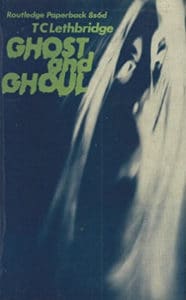
Why are some places haunted and not others? Why is there more activity associated with one location and not another? Why do different people, from completely different backgrounds, or even time periods, often share the same experiences at the same location?
Whether using strict scientific experiments or other forms of sensory research, many people have suggested theories about the paranormal to answer some of those burning questions. For nearly two centuries many have explored an explanation that we now call the “Stone Tape Theory” or residual hauntings. Often linked with place-memory, the Stone Tape Theory is probably one of the most popular explanations for the presence of ghostly activity.
Have you ever had a distinct feeling that you’re being watched or listened to? That strange sensation that someone is lurking just around the corner. Or, maybe you had the impression that someone has left a recording device that is capturing your words and actions to play it back at a different time. That creepy feeling that you may have experienced, of being watched by unseen forces, partially forms the basis of the Stone Tape theory. Although it became popular in the late 20th century, the theory has a storied past and it continues to interest paranormal researchers to this day.
The Scientific Origins of “Place-memory”

In the 19th century, there was a keen interest in examining how human activity may be recorded or left behind even after we’ve departed. The people researching these ideas weren’t ghost hunters looking for spiritual signals; most were scientists trying to understand how the elements and our environments worked. Charles Babbage, a 19th century thinker credited with the concept that eventually became the programmable computer, speculated about how spoken human words may remain in the air long after they are uttered. He suggested these words eventually become inaudible to most humans, but all of our speech floats in the air with us…forever! According to Babbage, a few people could still interpret these inaudible words and they had the power to unlock memories.
Seeking out the recorded memories of a place was part of many ancient cultures, but Babbage was likely the first person to write about what eventually became known as “place-memory.” By the late 19th century, with the rise of spiritualism, science was increasingly being intertwined with the study of the paranormal and researchers were regularly called upon to explain ghost sightings. Place-memory quickly became a popular theory for spiritualists who sought to explain why an unseen presence could be heard during seances or uncovered by the gifted presence of a medium.
The concept of place-memory speculates that people become linked to places for various reasons. Perhaps the place held a lot of meaning for someone when they were alive, or maybe they tragically died there under gruesome circumstances. At the time, many people believed that ghosts floated around us at will or attached to a certain person. On the other hand, place-memory suggested that spirits become connected to certain places. This idea of a ghost becoming rooted to a site probably sounds very familiar. Many of our contemporary theories about the paranormal, and especially how the same ghosts tend to stay in the same places, is based on the concept of place-memory.
Psychometry and Leaving Traces

Place-memory is very closely associated with psychometry, the idea that you can learn about a person or place by touching an object connected with that person or place. Joseph Rodes Buchanan came up with the term psychometry, which means “measuring the soul”, in 1842. He was interested in the impressions that people left on objects but also claimed we could unlock and interpret those imprints with the right techniques. Although many paranormal enthusiasts are probably familiar with this idea today, like place-memory, psychometry was very new in the 19th century.
Although place-memory and psychometry suggested that ghosts may become attached to a certain place, there was no explanation of why or how. As scientists continued to study the elements and develop their understandings of physics and chemistry, they struggled to find explanations for the supernatural. But it seemed most people in the late 19th century were content to accept that ghosts were able to attach to objects. Besides, spiritualists were focused on perfecting their communication techniques. By the 1930s, place-memory was still a popular explanation for paranormal activity among spiritualists, but the theory was about to get broader attention.
Ghost Tours & Paranormal Adventures
The Foundations of Stone Tape
In the early 20th century, Henry H. Price advanced his theory about a “psychic ether”. He proposed that there was a realm where memories or thoughts were permanently stored. Price said that psychics and others connected with the spiritual world were able to access this realm and interpret the memories it housed. Henry H. Price also speculated that memories could attach themselves to places and then be played back again at a later date. He strongly believed that our human memories were always present in another realm and occasionally we may get glimpses into this unknown world.

The idea of place-memory was starting to attract new thinkers. By 1961, the idea received even more popular attention. Thomas Charles Lethbridge published “Ghost and Ghoul”, a popular collection of his personal experiences with the uncanny encountered during his career as an archaeologist. Believing strictly in science, Lethbridge was searching for an alternative explanation for the supernatural that made scientific sense. He concluded that there were still things about the earth to be uncovered, but perhaps impressions or memories can be stored in fields of energy. According to Lethbridge, they were unseen and often inaccessible, but sometimes humans encountered these fields of energy and that resulted in paranormal encounters. Although he never tried to prove his ideas, it was an important addition to a growing theory that would soon get a popular new name.
The Stone Tape

Lethbridge’s book was likely the main source of inspiration for the 1972 film The Stone Tape. In this terrifyingly spooky tale a group of researchers try to find how memories are being recorded in the stones of a Victorian mansion. As the name implies, the film shows stones taking a tape recording of events and then later playing them back on loop, without explanation, for scared witnesses. This same idea of dark memories stored in stones inspired a number of other productions, including the movies Prince of Darkness (1987) and Poltergeist (1982).
By the late 20th century, belief in the Stone Tape theory or residual haunting was commonplace amongst paranormal investigators. Many pointed to ancient cultural beliefs about spiritual stones and the importance numerous cultures have placed on certain objects in landscapes. The theory suggested why some places were more haunted than others and why the same events seemed to repeat themselves in some hauntings. It also explained a common type of paranormal even: where witnesses described figures going about their everyday lives without any recognition of another presence, or heard disembodied sounds, like footsteps, repeating the same actions time and time again.
Entertaining Clip From The Stone Tape (1972):
Where Are We Today?
Nowadays, many paranormal researchers accept that there are different types of hauntings, and the Stone Tape theory or residual hauntings are only one explanation among many. Strange events are often labelled a residual haunting if they seem to happen over and over again, almost on loop, and if the apparitions don’t interact with their human witnesses. If you’ve had an encounter that seems almost like an old movie, with figures moving in and out going about their past lives without noticing you, it’s often labelled a residual haunting.
Many proponents of the Stone Tape theory over the years have looked for scientific evidence to back their claims. All the way back to the early 19th century, researchers were hoping to prove the existence of an unseen realm using human tools and explanations. Although presented in a scientific way, some have pointed out that the explanations rely on unproven pseudoscience. However, other researchers are interested in the Stone Tape theory to examine how we relate to places around us and how we form memories.
The next time you are visiting a haunted location, look around you. Touch the stone foundations of the creepy barn down the old country road, or run your fingers along the cold masonry of the public building in your hometown. Wonder to yourself if those stones have recorded the memories of the past and, perhaps if you’re there at just the right moment, those memories might reveal themselves to you. Maybe you hear the clink of old china, or feel the brush of a skirt going past, or see someone walking down the hall. But also remember: if those stones recorded memories of the past, they can also record your memories of the present. Perhaps you may become the subject of a future ghost story, where the stones of the old building play back your memories for unsuspecting witnesses.
Written by:
Brittney Anne Bos, PhD
Haunted Walk Tour Guide & Host
Sources:
Types of Hauntings – https://hauntedoc.com/types-of-hauntings/
Stone Tape Theories: Hearing, Haunting and the Memory of Materials. https://uniondocs.org/event/2015-12-06-stone-tape-theories/
How Does it Work? The Stone Tape Theory: https://theghostinmymachine.com/2020/03/09/how-does-it-work-the-stone-tape-theory-residual-hauntings-and-the-deep-influence-of-memory-and-emotion/
Stone Tape Theory: The terrifying idea that your house ‘remembers’ what happened inside it. https://www.mamamia.com.au/stone-tape-theory-ghosts/
Ghost and Ghoul, description https://www.goodreads.com/book/show/7826194-ghost-and-ghoul
Henry H. Price https://www.britannica.com/biography/H-H-Price
Charles Babbage https://www.britannica.com/biography/Charles-Babbage
Psychometry https://www.britannica.com/topic/psychometry
